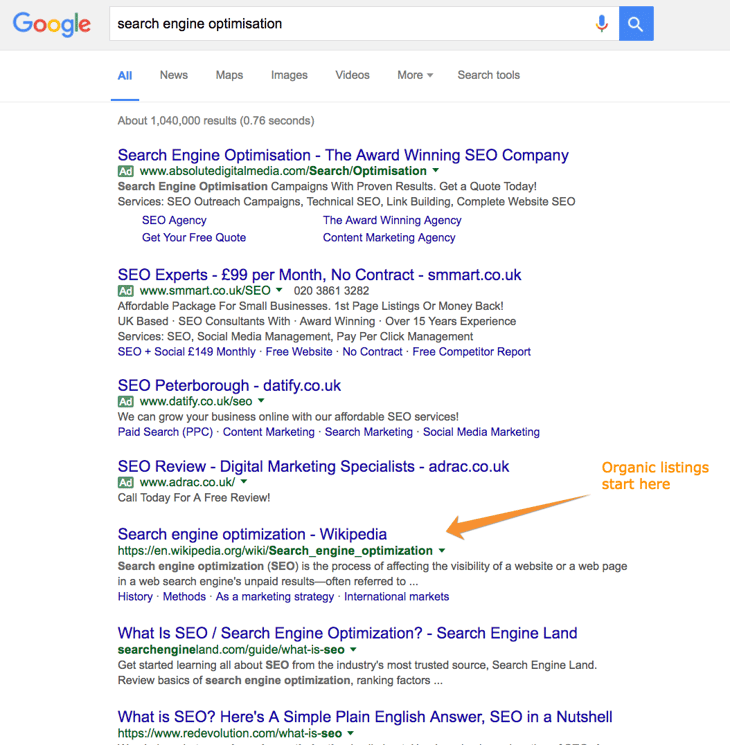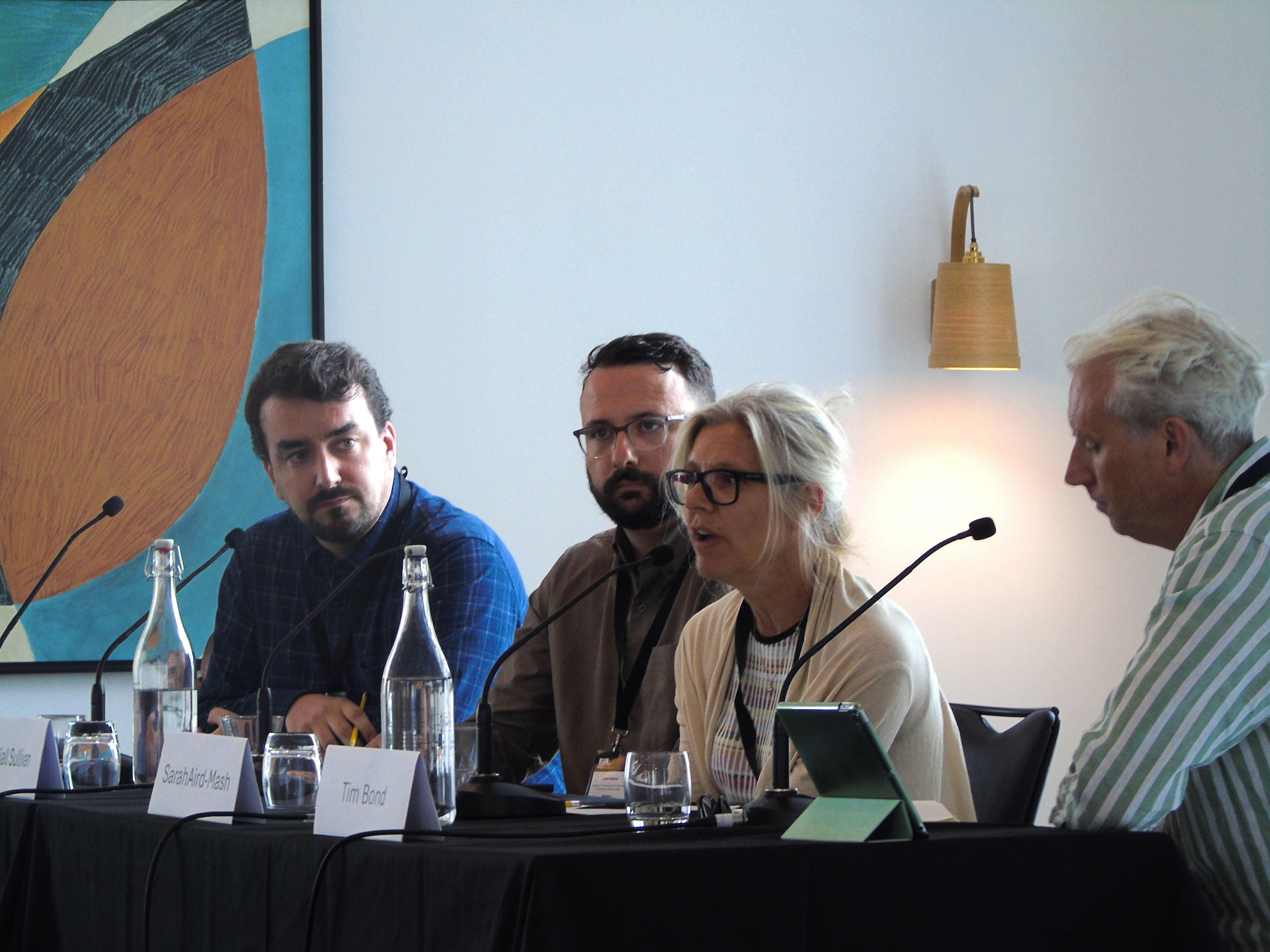No matter how well designed or how optimised a website is for conversions, unless you’re driving traffic to it you won’t be acquiring leads and customers. But how can you do that?
Here are four ways you can point more people in the direction of your website.
Search engine optimisation (SEO)
You may have heard of the phrase search engine optimisation, or SEO, before - after all, it’s one of the most important elements of digital marketing - but have no idea what it actually means.
Basically, SEO is a selection of techniques and strategies designed to improve the organic rankings of your website in the search engines. By organic rankings we mean the listings that sit below the paid ads.
The four main factors that Google takes into account when judging rankings are:
- The content on the website in regards to explaining what the site is about.
- How many backlinks are pointing at the website from authoritative external sources. Note that these links need to be ‘followed’ to pass link equity (SEO benefit).
- Whether or not the website is structured logically and easy to understand for both search engines and users.
- A website’s internal links - in other words how users are able to navigate your website via links between the site’s internal pages.
There are a whole range of other ranking factors to consider which you can find here, but these four are probably the most important.
If you’re new to SEO it might be also worth checking out these blogs:
- How to Effectively Optimise Your Blog Posts
- The Guide to Heading Tags and How to Use Them
- SEO Best Practices for Internal Linking
- The Ultimate SEO Glossary
Host a webinar
If your organisation has a lot of knowledge and expertise to share then why not do so with your online following?
Webinars are great ways of engaging with your community and demonstrating your expertise, and allow SMEs with a limited budget to essentially conduct their own conference - entirely free.
Starting a webinar with Google Hangouts is easy, and you can find a thorough guide to setting one up in our free eBook, ‘9 Things You Can Do to Generate More Leads’.
Inbound marketing
In the good old days, marketing involved what we now refer to as ‘disruptive’ strategies - essentially things that involve the brand taking their message to the consumer. These strategies included cold calling, TV ads, billboards - you get the idea.
Inbound marketing on the other hand focuses on bringing the consumer to the brand, typically via content marketing that is designed to solve common problems and answer questions of the brand’s target market.
Crafting a great inbound strategy involves content aimed at each stage of the buyer’s journey. These stages are:
Awareness - the consumer knows they have a problem, but has not identified exactly what that problem is;
Consideration - the consumer understands the nature of the problem and now needs to find the solution.
Decision - the consumer has identified a range of solutions and now needs to decide which one they want to choose.
Your aim should be to create tailored content to appeal to consumers at each stage, with each piece designed to push the consumer further down the journey towards becoming a customer.
A key element of inbound marketing from a lead generation perspective is downloadable content offers. These are pieces of gated content that sit behind signup forms, with the user required to enter their name and contact details to access the free offer.
You’ll need to create three content offers for each subject area - one for each stage of the buyer’s journey.
Our free 'Guide to Running an Inbound Marketing Campaign' goes into much more detail about how to make the most of inbound marketing.
PPC
So far we’ve talked about strategies that are free to do (or at least can be).
Although PPC requires a budget, the good thing about it for smaller organisations is that it is one of the most effective ways to drive traffic while strictly controlling your budget. Don’t want to spend more than £10 per day on ads? You can set that limit.
It’s a simple concept but one that takes years to master, so if you genuinely want to exploit PPC as a lead generation tactic you should look to hire someone internally or work with an agency.
To find out other methods of generating leads, with both online as well as offline strategies, download ‘9 Things You Can do to Generate More Leads’ today.
Stay Updated with Our Latest Insights
Get expert HubSpot tips and integration strategies delivered to your inbox.



